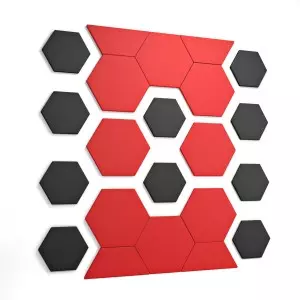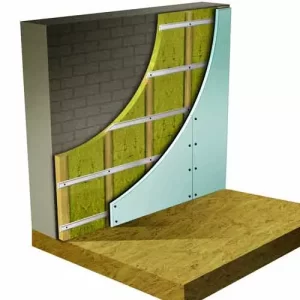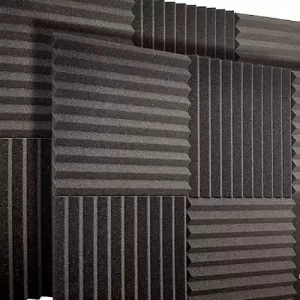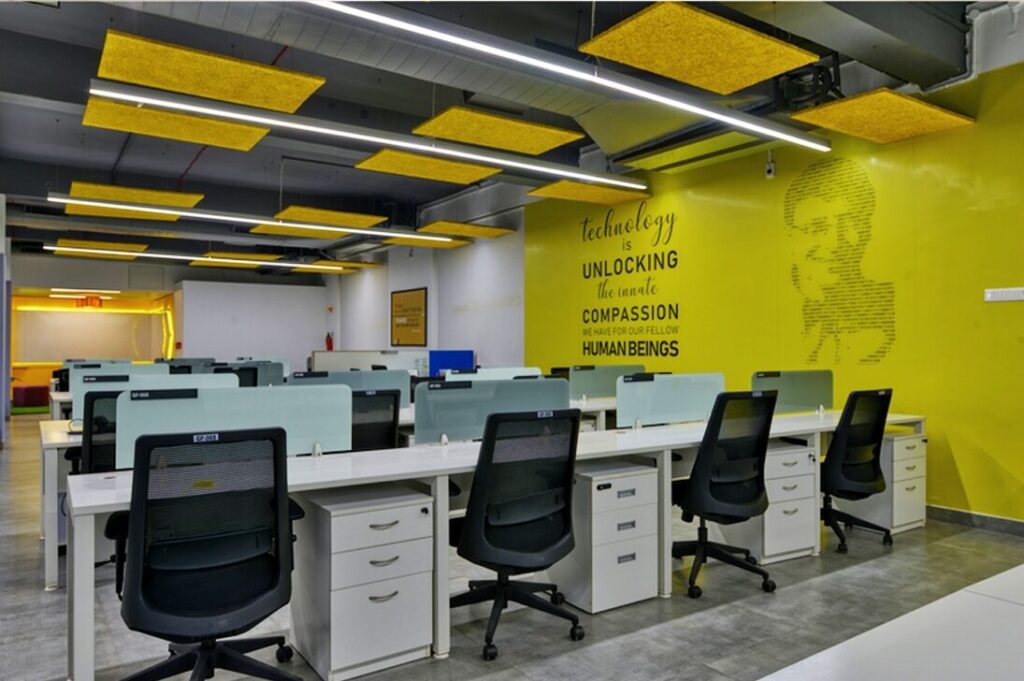Acoustic Panels for Conference Rooms: Enhancing Sound Quality and Productivity
Are you tired of dealing with distracting echoes, reverberations, and poor sound quality during your important conference room meetings? If so, acoustic panels may be the solution you’re looking for. In this article, we will explore the benefits of using acoustic panels in conference rooms, their impact on sound quality, and how they can contribute to a more productive and efficient work environment. So, let’s dive in!
Introduction
In a conference room setting, effective communication is key. However, poor sound quality can hinder communication and lead to misunderstandings. Acoustic panels offer a practical solution by reducing unwanted echoes and reverberations, thereby improving speech intelligibility and overall sound clarity. By addressing these acoustic issues, conference rooms become more conducive to productive discussions and efficient decision-making processes.

2. Understanding Acoustic Panels
Acoustic panels, also known as sound-absorbing panels, are specially designed products that are used to control and improve sound quality in various spaces, including conference rooms. These panels are typically made from sound-absorbing materials, such as foam or fabric, which help to reduce sound reflections and minimize sound energy that bounces off the walls, ceiling, and other surfaces in the room.
3. Benefits of Acoustic Panels in Conference Rooms

- Improved Speech Intelligibility: By minimizing echoes and reverberations, acoustic panels enhance speech clarity, making it easier for participants to understand and follow conversations during meetings.
- Enhanced Sound Quality: Acoustic panels absorb excessive sound energy, reducing background noise and creating a more pleasant and comfortable auditory environment. This allows for better focus and concentration during important discussions.
- Increased Privacy: With the use of acoustic panels, sound leakage from conference rooms to adjacent areas can be significantly reduced. This ensures privacy and confidentiality during sensitive meetings.
- Professional Aesthetics: Acoustic panels come in a variety of styles, colors, and finishes, allowing you to choose options that blend seamlessly with the interior design of your conference room. They can even be customized with company logos or artwork, adding a touch of professionalism and branding.
4. Choosing the Right Acoustic Panels for Your Conference Room
When selecting acoustic panels for your conference room, there are a few factors to consider:
- Acoustic Performance: Look for panels with high noise reduction coefficients (NRC) and sound absorption ratings. These measurements indicate the effectiveness of the panels in absorbing sound energy.
- Size and Thickness: Consider the size and thickness of the panels based on the dimensions of your conference room. Thicker panels generally offer better low-frequency sound absorption.
- Mounting Options: Determine whether you prefer wall-mounted, ceiling-mounted, or freestanding panels. Each option has its own advantages and may depend on the layout and design of your conference room.
5. Installation and Placement of Acoustic Panels

Proper installation and placement of acoustic panels are crucial to achieving optimal sound control. Here are some guidelines to follow:
- Identify Reflection Points: Determine the areas where sound reflections are most prominent, such as parallel walls or large flat surfaces. These are the ideal spots for installing acoustic panels.
- Strategic Panel Placement: Install panels in a way that ensures maximum sound absorption. For example, placing panels behind the primary speakers or along the longest wall can effectively reduce echoes.
- Consider Room Configuration: Take into account the layout and furniture arrangement of the conference room. Ensure that the panels do not obstruct important visual elements or impede the flow of foot traffic.
6. Maintenance and Care of Acoustic Panels
To ensure the longevity and effectiveness of your acoustic panels, regular maintenance is essential. Here are a few tips for maintaining and caring for your panels:
- Dusting and Vacuuming: Regularly remove dust and debris from the panels using a soft brush or a vacuum cleaner with a brush attachment. This prevents dust buildup, which can affect the panels’ sound-absorbing capabilities.
- Spot Cleaning: In the case of stains or spills, gently spot clean the affected area using a mild detergent and a damp cloth. Avoid using harsh chemicals or abrasive cleaners, as they can damage the panels’ surface.
- Inspecting for Damage: Periodically inspect the panels for any signs of damage, such as tears, loose fabric, or deteriorating foam. Replace or repair damaged panels promptly to maintain their acoustic performance.
7. Case Studies: Real-Life Examples of Successful Acoustic Panel Implementation
To further emphasize the effectiveness of acoustic panels in conference rooms, let’s explore a few real-life case studies:
- Company X: After installing acoustic panels in their conference room, Company X noticed a significant improvement in speech intelligibility. Meetings became more productive, and participants reported higher satisfaction levels.
- Organization Y: With the implementation of acoustic panels, Organization Y experienced a reduction in sound leakage, ensuring privacy and confidentiality during executive board meetings. This boosted trust and enhanced the overall work environment.
- Start-up Z: Start-up Z used acoustic panels to address acoustic issues in their open-plan conference room. The panels effectively absorbed excess noise, enabling clearer communication and better decision-making among team members.


8. The Future of Acoustic Panel Technology
As technology continues to advance, so does the development of acoustic panel technology. Future innovations may include:
- Smart Acoustic Panels: Integration of sensors and artificial intelligence to dynamically adjust the acoustic properties of panels based on the surrounding noise levels and room conditions.
- Sustainable Materials: The use of eco-friendly materials in the production of acoustic panels, aligning with the growing trend of environmentally conscious practices.
- Customizable Designs: Advancements in manufacturing techniques may allow for more intricate and personalized designs, catering to individual preferences and interior aesthetics.


Conclusion – Acoustic Panels for Conference Rooms
In conclusion, acoustic panels are a valuable addition to conference rooms, providing numerous benefits such as improved sound quality, enhanced speech intelligibility, increased privacy, and professional aesthetics. By investing in quality acoustic panels and following proper installation and maintenance practices, you can create a conducive environment for productive meetings and effective communication.
Frequently Asked Question- Acoustic Panels for Conference Rooms
- How do acoustic panels work?
Answer: Acoustic panels absorb sound energy, reducing echoes and reverberations in a room, thus improving sound quality. - Can acoustic panels be customized to match my conference room’s decor?
Answer: Yes, acoustic panels are available in various styles, colors, and finishes, allowing customization to blend seamlessly with your conference room’s interior design. - Are acoustic panels easy to install?
Answer: Yes, most acoustic panels are designed for easy installation. They can be wall-mounted, ceiling-mounted, or freestanding, depending on your preferences and room layout. - Do acoustic panels require regular maintenance?
Answer: Yes, regular maintenance such as dusting and cleaning is necessary to ensure the effectiveness and longevity of acoustic panels. - Can acoustic panels be used in other spaces besides conference rooms?
Answer: Absolutely! Acoustic panels are versatile and can be used in various settings, including offices, auditoriums, recording studios, and home theaters, to improve sound quality.
Other Acoustic Panels Products

Pet Polyester

Wood Wool Board

Pu Foam
Contact Us
Mobile: +919008400701 / 705
Email: sales@jayswalgroup.com

Visit Us
Address:
#6, 10th B Cross, Jayswal Center, KHB Main Road, Kaveri Nagar, Kanakanagar, RT Nagar, Bangalore – 560032, Karnataka, India.
Other Websites: